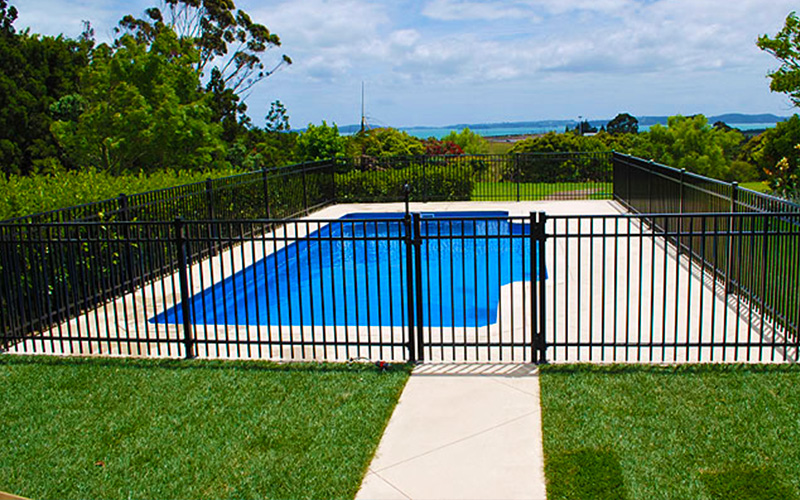
If you have a swimming pool then it’s crucial to ensure that it is safe.
The main questions most people ask are what are the legal requirements in Australia for residential swimming pool fences and do you need to install a pool fence?
Having a secure swimming pool fence is the best way to reduce the risk of drowning or other water-related injuries as young children under five years old are very vulnerable to serious injury around water, however, the drowning rate in Australia has actually decreased by 67% over the last 25 year due, in part, to the stricter rules we have around things like swimming fences, as well as educating more people about the dangers.
Unlike your regular front yard or back yard fence, a swimming pool fence must adhere to a set of regulations set out by the Australian standards regulations.
Although there are a few differences between states, they are pretty universal across the country and you must make sure your fence is compliant to keep yourself and your family safe.
The Australian standard fence regulations may seem like many rules to follow, but most of them are fairly basic and a pool fence sold to you should automatically comply with the below-listed regulations, especially if you are getting it installed by a professional.
It’s compulsory to get approval from a pool safety inspector before and after you construct your fence, so they will be able to add on any additional requirements your specific pool area needs.
Your fence must:
• From the finished ground level, have a minimum height of 1.2 metres.
• Not have a gap from the finished ground level to the bottom of your fence that exceeds 100mm.
• If your fence is less than 1.8 metres high, you cannot have any climbable objects within a metre of your pool which includes things like outside tables and chairs, large pot plants and large children’s toys.
• The gaps between the vertical rails cannot be wider than 100mm if there is a 900mm distance between the horizontal rails on the outside. If there isn’t, the gap between the vertical rails can’t be wider than 10mm which is mainly referring to tubular pool fences.
• A compliant CPR sign has to be either on the fence or next to it, where people entering the pool area can clearly see it
• There should not be any windows or doors that open into the pool area, if there are windows, they must not open more than 100mm and need a security screen.
The gate is perhaps even more critical than the fence as it’s the pathway in and out of the pool area.
Your gate must:
• Open inward into the pool area.
• Be self-closing and self-latching/self-locking.
• The latch on the gate has to be at least 1.5 metres above the finished ground level and 1.4 metres above the bottom of the fence. If you’re unable to build it that high, you must have the latch on the inside of the wall so that a person has to reach over the fence to open it.
• If your pool gate hinges are thicker than 10mm, they are seen as a potential climbing opportunity and any hinges under a metre must have a non-climbable safety cap on them.
Simple answer, all types of pools!
Above-ground pools also require a fence that matches the Australian Standards and if your above-ground pool is a rental or temporary summer fixation, there are temporary pool fences you can use.
Standard pool fencing regulations may also apply to spas and even potentially inflatable pools.
You will need to get a pool fence if your spa/portable pool/inflatable pool can do any of the listed:
• Has a water volume of over 2000 litres.
• Has a filtration system or
• If the water can be filled to be deeper than 300mm.
Firstly, remember that these rules are here to keep you and your family safe.
Prevention of injury and drowning should be a greater incentive than dodging a bill.
However, you will receive an on-the-spot fine from your local government if your pool fence and pool area do not follow guidelines.
Not registering your pool or having an unsafe fence may also lead to court action.
This is a common occurrence in many Australian households and it can be very cost-effective to save on building a whole new wall.
You will be responsible for the cost of making your side of the fence compliant with Australian regulations, for example, lowering the gap at the bottom or raising the height.
Both you and your neighbour will be responsible for maintaining the fence, although only you will be in trouble if the fence doesn’t meet safety compliance rules.
Your pool fence is definitely the most crucial part of your pool safety plan.
You can also take other minor actions to ensure that your pool area is safe for everyone enjoying it, which are:
• Storing any pool chemicals in a locked cupboard or on a high shelf, where young children cannot access them.
• Keeping a first-aid kit somewhere easily accessible.
• Having one person in your household learn CPR, so they can administer it if the worst happens.
• Set rules about what is and isn’t allowed around the pool which could include no glasses by the pool, no running by the pool, and no pushing another person into the pool.
• Clearing away pool toys and other items when not in use, in case they pose a tripping hazard.